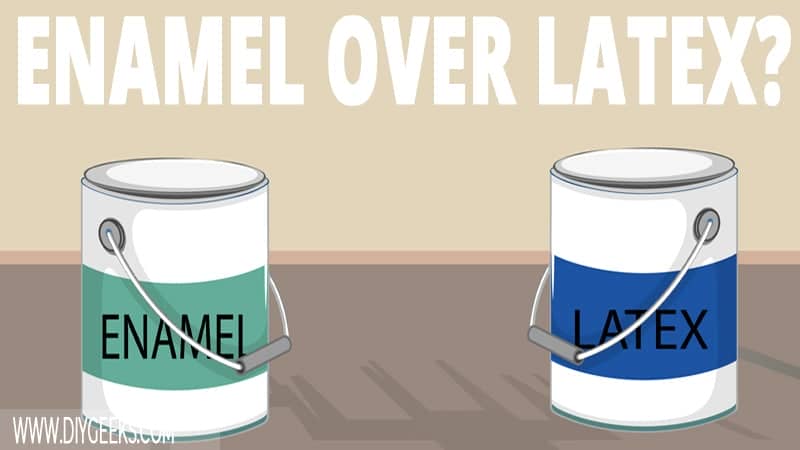Enamel paint is oil-based while latex paint is water-based. So, can you apply enamel paint over latex paint?
You can apply enamel paint over latex paint finish, but the finish must be clean, dry, and unsealed. You must clean the finish to remove dust and dirt and sand it to remove imperfections.
Does Enamel Paint Adhere Over Latex Paint?
Enamel paint does adhere over a latex paint finish because the finish doesn’t have a glossy sheen or prevent paint adhesion. Latex paint doesn’t have a glossy finish that repels paints, instead, it has a dry textured finish that other paints will stick over it.
Before applying enamel paint over latex paint, clean, sand, and prime the finish as latex paint attracts dust and dirt which prevent good adhesion.
Cleaning removes dust and dirt, sanding removes imperfections and bumps from the finish and surface, while the primer produces an undercoat that improves paint adhesion.
You must remove the entire finish if the latex paint is sealed or has a high-gloss sheen. The sealer or high-gloss sheen will prevent enamel paint from penetrating the finish and sticking.
How To Apply Enamel Over Latex Paint?
To apply enamel paint over latex paint, do the following.
- Clean the Latex Finish.
- Remove the Sealer (if any).
- Sand the Finish.
- Apply Paint Primer.
- Apply Enamel Paint.
The tools you need for this project are listed below.
- Safety Gears
- Enamel Paint
- A Paintbrush Or A Spray Gun
- Mineral Spirits
- Sandpaper
- Primer
- Paint Scraper Or Metallic Putty Knife
- Rags
1. Clean the Latex Finish
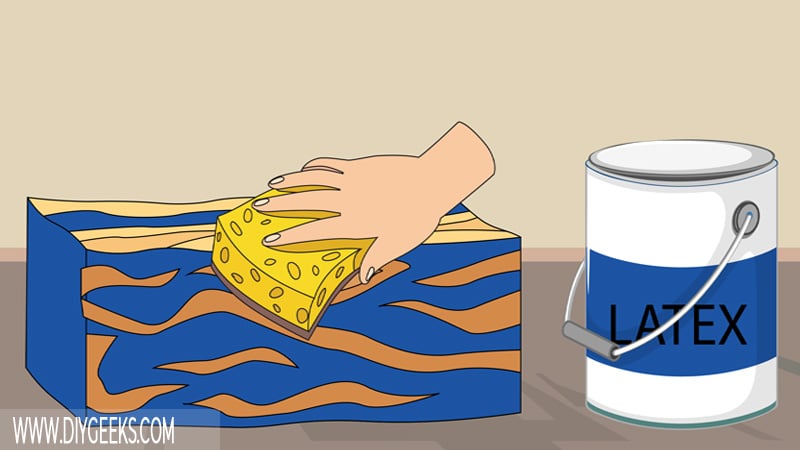
Clean the latex paint finish to remove dust, dirt, and debris that can prevent good paint adhesion. If you don’t clean the finish, enamel paint won’t adhere properly as dust and dirt will prevent proper penetration.
To clean a latex paint finish, do the following.
- Mix soap with warm water.
- Damp a clean rag with the mixture.
- Wait 5 minutes.
- Use the dampened rag to wipe off the dust from the finish.
- Remove the soap residue using clean water.
- Allow the finish to dry.
Don’t clean latex paint finish with solvent-based products as it can remove it.
2. Remove the Sealer (If Any)
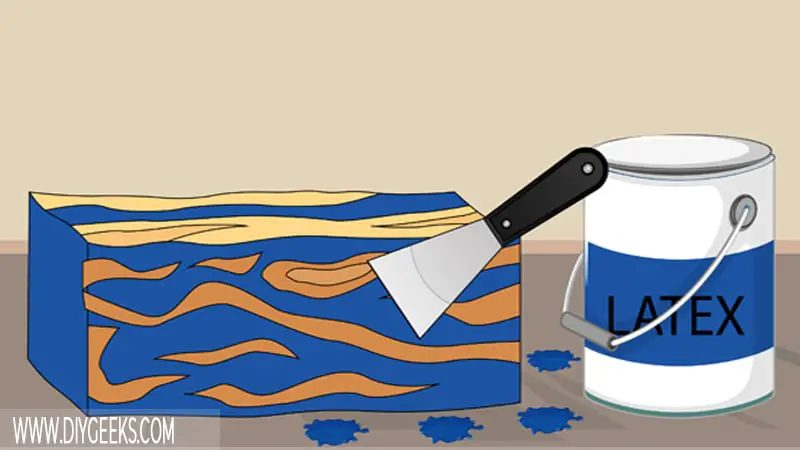
If latex paint is sealed with a sealer (or topcoat), you must remove it. The sealer (or topcoat) has a glossy and water-resistant finish that will prevent enamel paint from penetrating the latex paint finish and sticking.
To remove a sealed latex paint finish, do the following things.
- Apply mineral spirits over the coating.
- Wait 10 minutes.
- Scrape the sealer using a paint scraper.
- Re-apply mineral spirits to the leftover sealer.
- Remove the leftover sealer with a rag.
- Remove the residue of the mineral spirit from the surface.
Unfortunately, you can’t remove the sealer without removing the latex paint.
Note: If the finish isn’t sealed or waxed, skip this step.
3. Sand The Finish
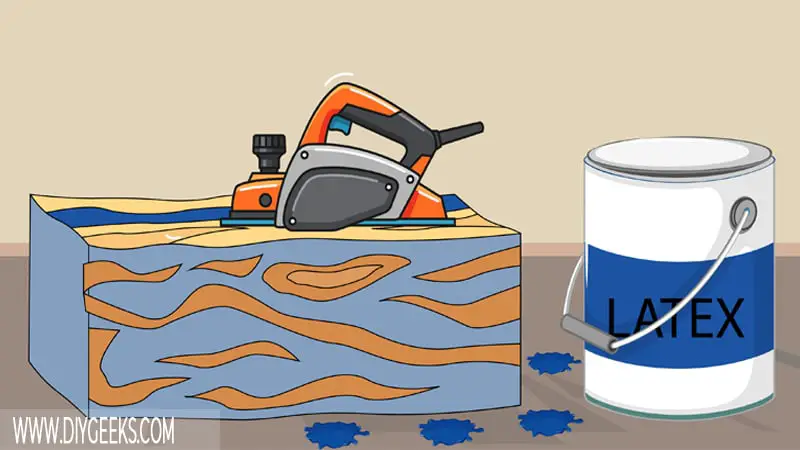
Sand the latex paint (or wood) with medium-grit sandpaper (100-grit) to remove any imperfections and bumps and flatten the surface. Then, use fine-grit sandpaper (220-grit) to smoothen the surface.
4. Apply Paint Primer
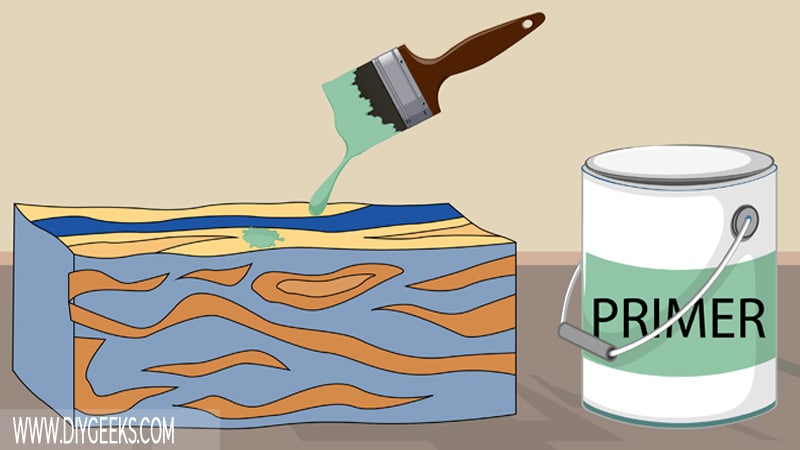
A paint primer coating will cover imperfections on the surface and improve the paint adhesion between the enamel paint and the surface (or latex paint).
The paint primer produces a flat dry texture finish that allows penetration. You can use an oil-based or water-based primer.
To apply primer, do the following things.
- Apply 2 coats of primer.
- Wait until one coat dries before applying the next one.
- Optionally, sand between the first and second coat (don’t sand the final one).
- Wait until the primer dries before applying enamel paint.
5. Apply Enamel Paint
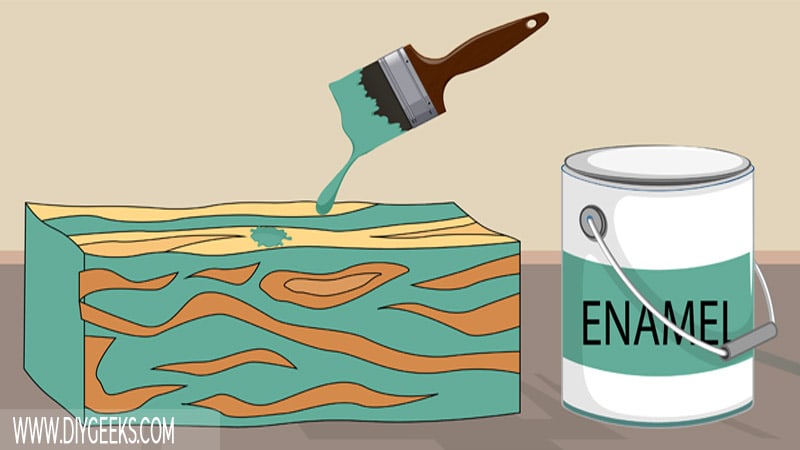
To apply enamel paint, do the following things.
- Use a paintbrush or sprayer.
- Apply 3-4 thin coats of enamel paint.
- Wait until one coat dries before applying the next one.
- If the paint coatings dry unevenly (or have imperfections), sand with extra fine-grit sandpaper (400-grit).
- Allow the final coat of enamel paint to dry fully (cure) before using it.
- Seal the finish paint with a topcoat.
Oil-based enamel paint takes 6 hours to dry between coats and 48 hours to fully dry (cure).
It takes enamel paint 24 hours to dry fully (cure). You must wait until the finish cures before using the surface or sealing with a topcoat.
Can You Mix Enamel And Latex Paint?
You can’t mix enamel and latex paint as they use different solvents (oil and water) and aren’t compatible. Enamel paint uses oil (synthetic or natural) as its solvent, while latex paint uses water as its solvent.
If you mix enamel and latex paint, the finish will have an inconsistent color, flow, and dry time, and will peel off.
Both paints have different drying times because of the different paint solvents. Latex paint dries faster as its solvent (water) evaporates faster than enamel paint solvent (oil).
If you mix both paints, one part of the mixture will dry faster than the oil which leads to a cracked finish. The finish will have a yellow tint since oily deposits didn’t evaporate.
You can mix water-based enamel paint with latex paint as both are water-based and compatible.
Related Read: Latex Paint vs. Enamel Paint?
Can You Apply Latex Over Enamel Paint?
You can’t apply latex paint over enamel paint as both use different solvents (water and oil) and aren’t compatible.
Enamel paint uses oil as its solvent and produces a glossy finish that prevents paint adhesion, so latex paint won’t stick over it.
Latex paint must penetrate the surface to stick, but since it can’t penetrate (soak into) the enamel paint coating, the paint won’t stick. Instead, the latex paint will turn tacky or sticky.
To apply latex over enamel paint, remove the glossy topcoat first, and then apply it. You can also apply a primer between paints to help with adhesion, but the adhesion won’t be that good.
